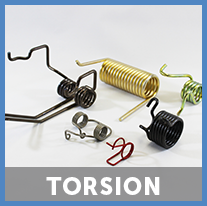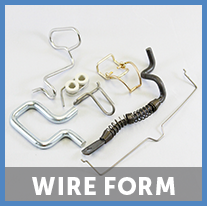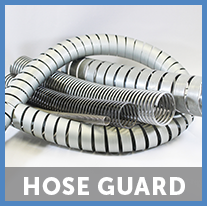Most springs are subject to some amount of relaxation during their life span even at room temperature. The amount of spring relaxation is a function of
- the spring material
- the stress the spring is exposed to
- the temperature
- the amount of time the spring is exposed to the higher stresses and temperatures.
This relaxation is usually less than 1 or 2% at room temperature, but can be much more when the spring is exposed to higher stresses or higher temperatures.
Relaxation is different than ordinary set. A highly stressed spring will set the first several times it is pressed, but within 5 to 10 cycles it has set as much as it is going to set.
Relaxation of springs is a function of a fairly high stress (but usually lower that required to cause set) over a period of time. A spring held at a certain stress will actually relax more in a given time than a spring cycled between that stress and a lower stress. The reason is that it spends more time at the high stress.
It is often necessary to predict the amount of spring relaxation to expect over a certain period of time. This is done by first determining the operating temperature, the maximum amount of stress the spring sees and how long the spring will be exposed to the maximum stress and the elevated temperature over its lifetime.
Rockford Spring Company has charts for several materials and temperatures. Examples are given below. For situations where the charts do not cover the specific case, we can do accelerated spring relaxation experiments for specific springs. This is done by measuring relaxation at short intervals such as 1 hour, 5 hours, 10 hours, 50 hours and 100 hours and then plotting % relaxation vs. log time. The resulting graph can be extrapolated to 5, 10, 20 years or longer to predict the % relaxation at the design life of the spring.
Relaxation in service can be virtually eliminated by 100% heat setting the springs. Heat setting involves holding the spring at a high stress at an elevated temperature and causing the spring to undergo all the relaxation it would be expected to see over it's lifetime. We would coil the springs longer, allowing for the heat setting operation. After heat set, the loads would be at the required specification, and would stay there for the life of the part. The only downside to heat setting is the additional cost. Contact Rockford Spring Company for more information.
The examples below show some data from the kind of charts Rockford Spring Company has available, and the differences in spring relaxation performance between different types of spring materials. Contact Rockford Spring Company for your application.
| Music | 200 deg F | 72 hrs | 5% relaxation at 99,000 PSI |
| CR-SI | 200 deg F | 72 hrs | 5% relaxation at 135,000 PSI |
| 17-7SS | 550 deg F | 72 hrs | 5% relaxation at 175,000 PSI |
| Music | 200 deg F | 10,000 hrs | 5% relaxation at 76,000 PSI |
| CR-SI | 200 deg F | 10,000 hrs | 5% relaxation at 117,000 PSI |
| 17-7SS | 500 deg F | 10,000 hrs | 5% relaxation at 160,000 PSI |






